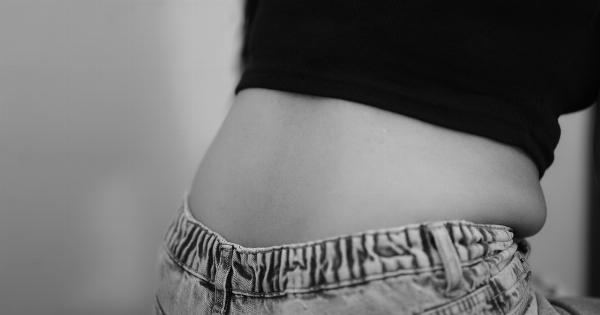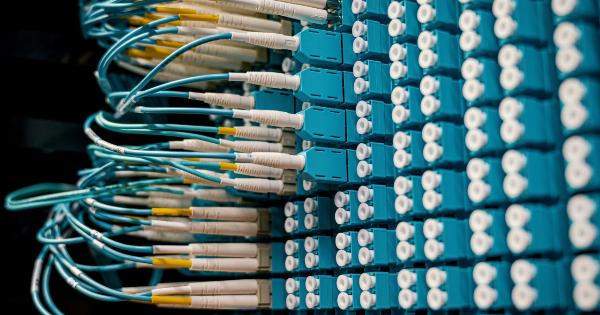Bladder control is one of the most important and essential aspects of our urinary system. From the moment we are born, our bladder serves as a container for our waste products until we feel the urge to urinate.
However, sometimes things don’t always go according to plan, and we may experience incontinence— the involuntary leakage of urine that can have a significant impact on our lives.
What is Incontinence?
Incontinence is the term used to describe the lack of control of the bladder. It is a common problem, affecting approximately 25 million Americans, and can occur at any age.
Incontinence can range from a small leak during heavy lifting to a complete loss of control of the bladder.
Causes of Incontinence
There are many different causes of incontinence, including:.
- Weak bladder muscles
- Overactive bladder muscles
- Damage to the nerves that control the bladder
- Blockage from an enlarged prostate in men
- Changes in hormones in women during menopause
- Obstruction in the urinary tract
- Medications that affect bladder function
Types of Incontinence
There are several types of incontinence, each with its own specific causes and characteristics.
Stress Incontinence
Stress incontinence is the most common type of incontinence in which urine leaks out during activities that increase abdominal pressure, such as sneezing, coughing, laughing, or exercising.
It is often caused by weakened pelvic muscles due to pregnancy, childbirth, and menopause in women, and prostate surgery in men.
Urge Incontinence
Urge incontinence is when you experience a sudden and intense urge to urinate, which can be difficult or impossible to control.
This type of incontinence is often caused by an overactive bladder, which can be a result of neurological disorders such as multiple sclerosis or Parkinson’s disease, bladder infections, or even certain medications.
Overflow Incontinence
Overflow incontinence is when your bladder does not empty completely, causing dribbling, weak stream, or frequent urination. It can be caused by an obstruction in the urinary tract, an enlarged prostate in men, or neurological damage.
Functional Incontinence
Functional incontinence is when a physical or cognitive impairment, such as arthritis or dementia, makes it difficult to reach the bathroom in time.
Mixed Incontinence
Mixed incontinence is when two or more types of incontinence occur at the same time, such as stress and urge incontinence.
Diagnosing Incontinence
If you are experiencing symptoms of incontinence, your doctor will perform a physical examination and may recommend additional tests such as:.
- Urinalysis to check for signs of infection or other abnormalities in the urine
- Bladder diary to keep track of your urinary habits and patterns
- Urodynamic testing to measure bladder function and pressure
- Ultrasound to check for any structural abnormalities
Treating Incontinence
The treatment for incontinence varies depending on the type of incontinence and the underlying cause. Treatment options may include:.
Behavioral Techniques
Behavioral techniques generally involve training the bladder and pelvic floor muscles. This may include exercises such as Kegels, scheduled voiding, and bladder training techniques to help reduce frequency and urgency.
Lifestyle Changes
Lifestyle changes such as weight loss, avoiding bladder irritants such as caffeine and alcohol, and quitting smoking can help reduce symptoms of incontinence.
Medications
There are several medications available that can help prevent incontinence or reduce its symptoms by relaxing the bladder muscles or increasing the contraction of the urethral sphincter.
Medical Devices
Medical devices such as catheters or a prolapse ring can help manage incontinence in certain situations.
Surgery
Surgery may be an option for severe cases of incontinence that do not respond to other treatments, such as bladder suspension surgery, sling surgery, or artificial sphincter implants.
Overcoming Incontinence
Incontinence can be a challenging condition to manage, but with the right treatment and support, it is possible to overcome the challenges it presents. Here are some tips for managing incontinence:.
Practice Good Bladder Habits
Developing good bladder habits can help reduce symptoms of incontinence. This includes drinking plenty of water, using the toilet regularly, and avoiding bladder irritants such as caffeine and alcohol.
Try Pelvic Floor Exercises
Pelvic floor exercises, also known as Kegels, can help strengthen the muscles that control the bladder. These exercises involve squeezing the muscles that you use to stop urination and holding them for several seconds.
Use Absorbent Products
Absorbent products such as pads or adult diapers can help manage leaks and provide peace of mind while you are out in public or during other activities.
Find Support
Living with incontinence can be challenging, but finding support can make a big difference. Talking to your doctor or reaching out to support groups can provide you with information, resources, and strategies for managing your symptoms.
Conclusion
Incontinence is a common problem that can have a significant impact on your quality of life.
If you are experiencing symptoms of incontinence, talk to your doctor as soon as possible to identify the underlying cause and explore the treatment options that are right for you.



























